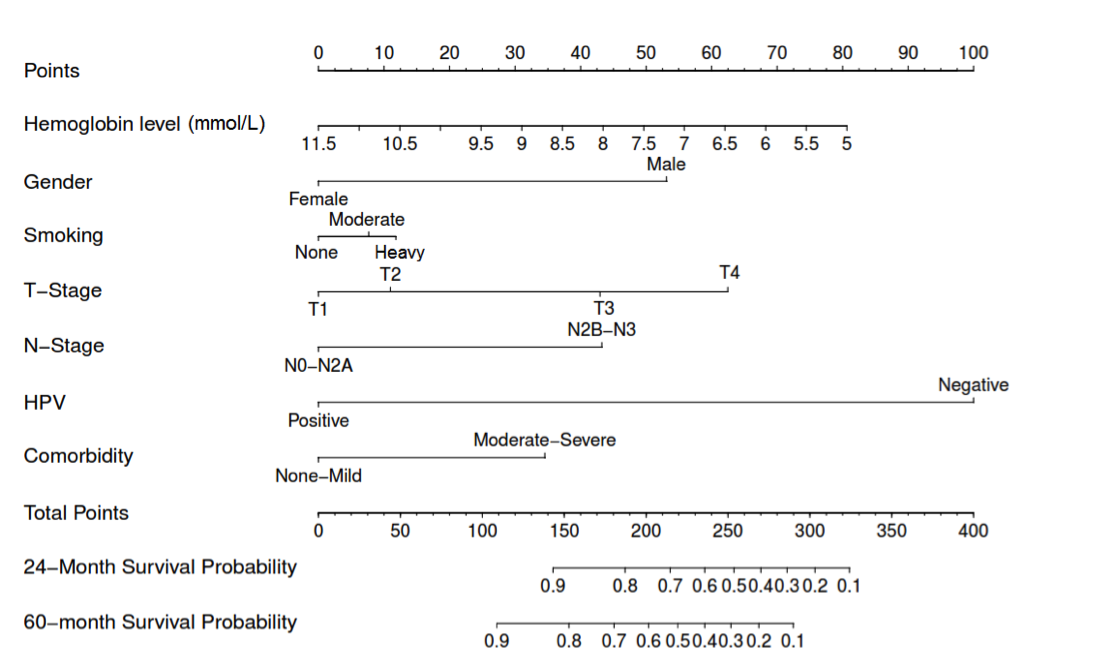Methods: We analyzed the association between clinico-pathological factors and overall and progression-free survival in 168 OPSCC patients treated with curative radiotherapy or concurrent chemo-radiation. A multivariate model was validated in an external dataset of 189 patients and compared to the TNM staging system. This nomogram is given below.
Results: Predictors of unfavorable outcomes were negative HPV-status, moderate to severe comorbidity, T3-T4 classification, N2b – N3 stage, male gender, lower hemoglobin levels and smoking history of more than 30 pack years. Prediction of overall survival using the multi-parameter model yielded a C-index of 0.82 (95% CI, 0.76 – 0.88). Validation in an independent dataset yielded a C-index of 0.73 (95% CI, 0.66 – 0.79. For progression-free survival, the model’s C-index was 0.80 (95% CI, 0.76 – 0.88), with a validation C-index of 0.67, (95% CI, 0.59 – 0.74). Stratification of model estimated probabilities showed statistically different prognosis groups in both datasets (p < 0.001).
Conclusion: This nomogram was superior to TNM classification or HPV status alone in an independent validation dataset for prediction of overall and progression-free survival in OPSCC patients, assigning patients to distinct prognosis groups. These individualized predictions could be used to stratify patients for treatment de-escalation trials.
Nomogram

| Attachment | Size |
|---|---|
| 7.19 KB | |
| 9.48 KB |